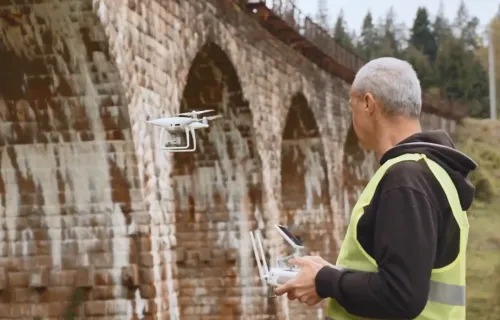Operational technology (OT) is traditionally associated with the manufacturing and utilities industries. This is because they are generally asset heavy organisations which need to track and monitor the performance of each asset, enabling them to really understand what is going on within their vast and often complex operational networks.
But I like to view it as a digital nervous system for your organisation, allowing you to rapidly gain insights into your operations, identify issues and discover where you can reduce your costs. When viewed like that, can other sectors also take advantage of the opportunities for insights and efficiencies that operational technology can provide?
Creating value from OT in the services sector
There are a vast number of opportunities for different industries to harness the value of OT. For instance, if you were running a hotel or office building you may want to optimise your power or water consumption to increase efficiency and reduce your carbon footprint.
OT can be put in place to track and measure the power used by your lights or your equipment, the water and waste usage, as well as the number of people coming in and out of your building. And once you have all these measurements you can start to predict things that will create efficiencies. For instance, you can start to only send power to the parts of the building that are currently occupied or drive lifts to the right floors at the right time. Both of which will minimise the power consumption, improve the experience of people using the building and reduce the wear and tear of equipment.
The evolution of sensors and tools delivering deeper insights
Previously organisations may have found that the cost of entry, or the type of sensors available, may have been prohibitive to implement OT in their organisation. However, with the cost of devices falling and wider access to communications there are now more powerful tools available at an affordable price-point. So, there are a lot more opportunities for different types of organisations from a variety of sectors to implement an OT strategy and get a real return on that investment.
For instance, the range of sensors has increased massively. We now have over 100 sensors taking all kinds of measurements, way beyond the traditional temperature and pressure that we used to work with. Edge computing is also allowing us to do a lot more processing at the location where the data is being captured. We can now run complex AI or machine learning on the devices to allow a much deeper understanding of the behaviour of some of the scenarios.
It is this evolution in both sensors and AI analysis that means OT has now progressed beyond the traditional operational insights and tracking and is allowing us to be able to predict future states. And by computing on the edge, where the sensor or device is located, the system will be able to only send an alert when something has changed and needs to be looked at, thereby reducing the amount of data that is flowing through the system – reducing costs, performance bottlenecks, and network congestion. This is how we can now look to optimise environments and scenarios and control complex systems more autonomously, whilst still reducing the costs of computing and data storage.
Ensuring a return on your OT and insights investment
Clients who are looking to start their OT journey often ask: ‘What is the best system/sensor/platform to get a rapid return on investment?’ The ONLY way to maximise the chances of a return on investment is to start with the desired business outcome, not the technology.
We typically work with our clients to:
- Capture what your business wants to achieve. If it’s your business, this should be easy; if you are in a separate team, go ask people in the business what results they’d like to see, what problems they’d like to solve, and – most importantly – what impact they’d like to have on their service to their customers or citizens
- Start with a small-scale proof of concept to test the hypothesis that by monitoring whatever you want to check up on, the business will be able to respond sooner, reduce outages, improve output or whatever you agreed your objectives were
- Understand the implications of changes you might need to make to policies, standards, team structures or processes to deliver the result
- Identify support for people to maximise the benefits of new ways of working – will they need training? Changes to overtime/on call arrangements? Laying the ground work for these things now can prevent people issues getting in the way
- Measure success of your proof-of-concept. Can you see a way to deliver the results your business wants if you scale it up? There might be a mix of hard “cashable” benefits from reduced third party spend or lower overtime bills or headcount reduction, but also non-tangible or indirect benefits like better reputation for lower outages, or revenue growth from higher service levels, so remember to capture all of these
- Develop the business case and implementation plan. Then you can work out how to scale it up to maximise the benefit and truly deliver improvements that your boss, your shareholders and your customers will thank you for, and you won’t have wasted a fortune working it out.
If you would like to discuss your OT strategy and the outcomes you want to achieve, please reach out to us.






